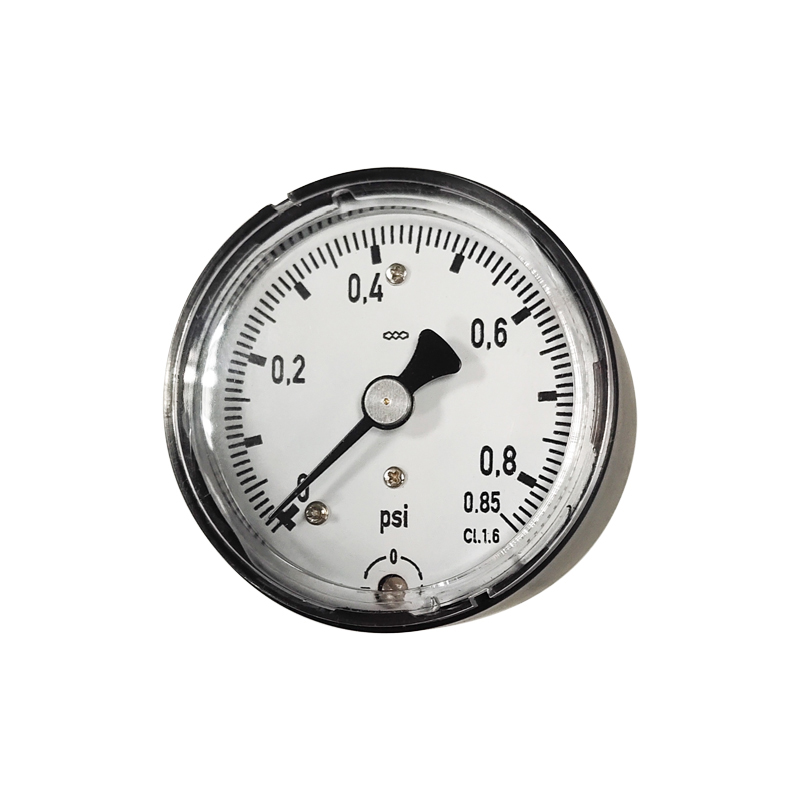
Nov . 10, 2024 00:25 Back to list
Liquid-Filled Diaphragm Pressure Gauge for Enhanced Accuracy and Durability in Measurement
Understanding Liquid-Filled Diaphragm Pressure Gauges
In various industries, precise pressure measurement is crucial for ensuring safety, operational efficiency, and the quality of products. Among the tools utilized for this purpose, liquid-filled diaphragm pressure gauges stand out due to their reliability and performance in dynamic and challenging environments. This article explores the workings, advantages, applications, and considerations for using these specialized instruments.
What is a Liquid-Filled Diaphragm Pressure Gauge?
A liquid-filled diaphragm pressure gauge is a type of pressure measurement device that employs a diaphragm—usually made of elastic material—sealed within a housing filled with a liquid (such as glycerin or silicone oil). When pressure is applied to the gauge, the diaphragm flexes, causing a corresponding movement in the internal mechanisms that translate this movement into a readable measurement on a dial or digital display.
The liquid filling in the gauge serves multiple purposes. Firstly, it provides a dampening effect that stabilizes the needle movement against rapid pressure fluctuations. This feature is particularly important in environments characterized by pulsating or erratic pressure signals. Secondly, the liquid protects the internal components from corrosion and damage, enhancing the gauge's overall durability and lifespan.
Advantages of Liquid-Filled Gauges
1. Increased Accuracy and Stability The dampening effect provided by the liquid filling results in a steadier reading. This is especially relevant in applications with high-frequency vibrations or pulsing pressures.
2. Extended Life Span By protecting internal components from environmental factors, such as dust, moisture, and corrosion, liquid-filled gauges generally exhibit a longer lifespan compared to their dry counterparts.
3. Wide Temperature Range Most liquid-filled gauges can operate effectively across a broad temperature range, further expanding their applicability in various industrial settings.
4. Reduced Maintenance The liquid inside the gauge not only enhances performance but also minimizes maintenance requirements. This aspect is beneficial for facilities looking to reduce downtime.
5. Versatile Applications Liquid-filled diaphragm pressure gauges can be employed in a wide variety of applications, from HVAC systems and water treatment plants to oil and gas industries.
Applications
liquid filled diaphragm pressure gauge product

Liquid-filled diaphragm pressure gauges are commonly used in industries where pressure readings are critical for operational safety and efficiency. Some common applications include
- Hydraulic Systems Monitoring pressure in hydraulic circuits to ensure system integrity and performance. - Gas and Oil Industries Utilized in the extraction and refining processes where accurate pressure measurement is vital. - Sanitary Applications In food and beverage processing, where cleanliness and precision are paramount. - Manufacturing Employed in various manufacturing processes to monitor pressure in tanks, reactors, and pipelines.
Considerations When Choosing a Liquid-Filled Gauge
While liquid-filled diaphragm pressure gauges offer numerous advantages, there are several factors to consider when selecting the right gauge for your application
1. Type of Liquid Different filling liquids are suitable for different applications. For example, glycerin is often preferred for general applications, while silicone oil may be used in environments with higher temperature fluctuations.
2. Environment Consider external environmental conditions, such as temperature extremes and exposure to corrosive substances, which may affect gauge performance.
3. Pressure Range Ensure that the gauge’s pressure range is suitable for the specific requirements of your application to avoid potential damage.
4. Dial Size and Visibility Depending on the installation site and user preferences, the size and readability of the gauge’s dial play important roles in everyday usability.
5. Calibration and Testing Regular calibration is essential to ensure ongoing accuracy, so consider how you will manage this requirement.
Conclusion
Liquid-filled diaphragm pressure gauges are essential tools in many industrial applications, offering reliability, durability, and increased accuracy. Understanding their functionality, benefits, and the factors influencing their performance can help businesses choose the right gauge to meet their specific needs. By doing so, they can contribute to safer, more efficient operations in their respective fields.
-
High-Precision Mass Diaphragm Pressure Gauge - Reliable & Durable Solutions
NewsJun.10,2025
-
Explain Diaphragm Pressure Gauge Expert Guide, Top Manufacturers & Quotes
NewsJun.10,2025
-
Affordable Differential Pressure Gauge Prices in China Top Manufacturers
NewsJun.10,2025
-
Reliable Water Fire Extinguisher Pressure Gauges for Safety
NewsJun.10,2025
-
Durable Diaphragm Protection Pressure Gauges Get Quote
NewsJun.09,2025
-
WIKA Differential Pressure Gauge with Switch Reliable Monitoring & Control
NewsJun.09,2025
